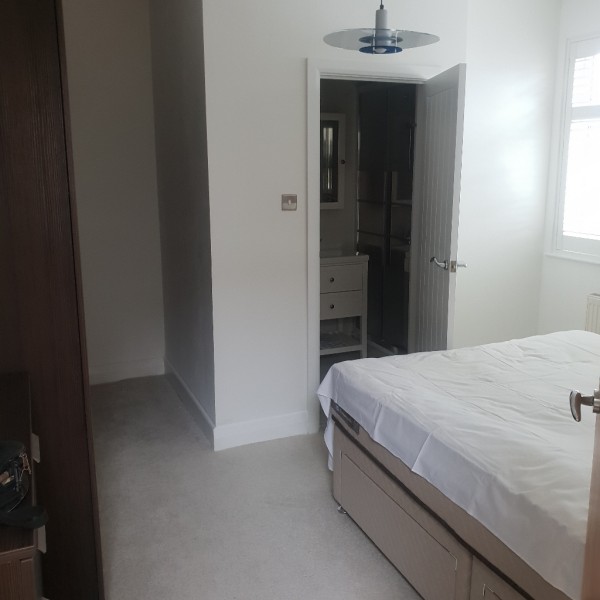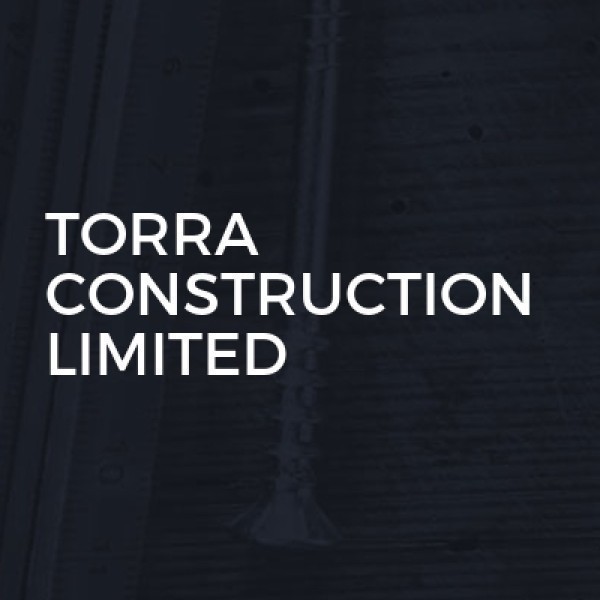Bricklayers in Chiswick
Welcome to ACJ Construction Slough Ltd, your premier choice for construction and civil engineering services in Slough and the surrounding... read more »
Alex Interiors Ltd: Your Premier Choice for Building Services in Edgware and Barnet, London
Welcome to Alex Inte... read more »
Welcome to AZ Stone Restorations Ltd, your go-to experts for plastering, painting, decorating, bricklaying, and property maintenance in G... read more »
Ras Building Contractors are your go-to experts in Ladywell, providing top-notch services across Lewisham, London. Speci... read more »
Welcome to B&D Building Solutions Ltd, your trusted partner for all your construction needs in Broad Green and the surrounding areas of C... read more »
Welcome to South Landscape, your go-to experts for all landscaping and property maintenance needs in Ladywell, L... read more »
Oakland’s Landscapes Ltd is a premier choice for all your building and landscaping needs in Newyears Greenread more »
Budget Paving Limited is a premier choice for all your landscaping and paving needs in Sandfields, Staffordshire. As a l... read more »
Old English Bricklayer Construction Limited is a premier choice for exceptional building services in Langleyread more »
Secta Building Services is your go-to expert for renovations, boiler and heating engineers, kitchen fitters, bathroom fi... read more »
Welcome to First Class Roofing And Gutter Cleaning, your premier choice for roofing and gutter services in Kingston upon Thames, London.... read more »
Raaz Construction Limited is a premier construction company based in Uxbridge, offering a comprehensive range of buildin... read more »
Welcome to O’Bler Construction LTD, your trusted partner for all construction needs in Newham, London. As a premier construction compan... read more »
Brickwork Management LTD: Premier Bricklayers in Bowes Park, Haringey, London
Welcome to Brickwork Management LT... read more »
Welcome to Torra Construction Limited, your go-to experts for all building needs in Tottenham and the vibrant Haringey area of London. As... read more »
Welcome to Lau&clau Carpentry Ltd, your trusted partner for exceptional construction services in Wembley Park, Brent, London. As a leadin... read more »
Carty Roofing & Building Ltd is a distinguished company nestled in the vibrant area of Canonbury, offering an extens... read more »
Welcome to NB Building, your trusted partner for all... read more »
Welcome to Finch Carpentry, your trusted partner for... read more »
Welcome to Professional Paving Services, your go-to e... read more »
Search Bricklayers in places nearby
Introduction to Bricklayers in Chiswick
Bricklayers in Chiswick play a crucial role in shaping the architectural landscape of this charming London suburb. Known for its picturesque streets and historic buildings, Chiswick demands skilled craftsmen to maintain and enhance its aesthetic appeal. Whether you're considering a new construction project or restoring a heritage property, understanding the role and expertise of bricklayers in this area is essential.
The Importance of Bricklayers
Bricklayers are the backbone of the construction industry. They are responsible for laying bricks, blocks, and other types of building materials to construct walls, partitions, arches, and other structures. In Chiswick, where the architectural style ranges from Georgian to modern, bricklayers must possess a keen eye for detail and a deep understanding of various building techniques.
Skills and Expertise Required
Bricklayers in Chiswick must be adept at reading blueprints and plans, understanding building codes, and working with a variety of materials. Their skills include measuring and cutting bricks to size, mixing mortar, and ensuring that structures are level and plumb. Precision and attention to detail are paramount, as even a small error can compromise the integrity of a building.
Training and Qualifications
To become a bricklayer, one typically undergoes an apprenticeship, which combines on-the-job training with classroom instruction. In the UK, this often involves obtaining a Level 2 or 3 Diploma in Bricklaying. Many bricklayers also pursue additional certifications to specialise in areas such as heritage restoration, which is particularly relevant in Chiswick.
Historical Significance of Bricklaying in Chiswick
Chiswick's rich history is reflected in its diverse architecture, from the stately homes along the Thames to the quaint terraced houses lining its streets. Bricklaying has been integral to the area's development, with many buildings showcasing intricate brickwork that requires expert craftsmanship to replicate or restore.
Preserving Heritage Buildings
Preserving Chiswick's heritage buildings is a task that demands specialised skills. Bricklayers working on these projects must be familiar with traditional techniques and materials to ensure that restorations are both authentic and durable. This often involves sourcing reclaimed bricks and using lime mortar, which is more sympathetic to older structures than modern cement-based mortars.
Challenges in Restoration
Restoration projects in Chiswick can present unique challenges. Bricklayers must carefully assess the condition of existing structures, identifying areas of damage or deterioration. They must then meticulously remove and replace damaged bricks, ensuring that the new work blends seamlessly with the old. This requires not only technical skill but also a deep appreciation for the historical context of each building.
Case Studies of Notable Projects
Several notable restoration projects in Chiswick highlight the expertise of local bricklayers. For example, the restoration of Chiswick House, a Palladian villa dating back to the 18th century, required extensive brickwork to preserve its iconic façade. Similarly, the refurbishment of the Hogarth House involved intricate bricklaying to maintain its historic charm.
Modern Bricklaying Techniques in Chiswick
While traditional methods remain important, modern bricklaying techniques have also found their place in Chiswick. These innovations allow for greater efficiency and precision in construction, catering to the demands of contemporary architecture.
Innovative Materials and Tools
Today's bricklayers have access to a wide range of materials and tools that enhance their work. For instance, the use of lightweight blocks can reduce construction time and costs, while advanced laser levels ensure that structures are perfectly aligned. These tools enable bricklayers to achieve high standards of quality and efficiency.
Eco-Friendly Construction Practices
As sustainability becomes increasingly important, bricklayers in Chiswick are adopting eco-friendly practices. This includes using sustainable materials, such as recycled bricks, and implementing energy-efficient construction techniques. These practices not only benefit the environment but also contribute to the long-term durability and value of buildings.
Adapting to Architectural Trends
Bricklayers must also adapt to changing architectural trends. In Chiswick, this might involve incorporating modern design elements, such as open-plan layouts and large windows, into traditional brick structures. This requires a balance of creativity and technical expertise to ensure that new additions complement the existing architecture.
Choosing the Right Bricklayer in Chiswick
Selecting the right bricklayer for your project is crucial to its success. Whether you're building a new home or restoring a historic property, you'll want to ensure that your bricklayer has the necessary skills and experience.
Evaluating Experience and Reputation
When choosing a bricklayer, consider their experience and reputation. Look for professionals who have a proven track record of successful projects in Chiswick. You can often find reviews and testimonials online, or ask for references from previous clients to gauge their satisfaction with the work.
Assessing Qualifications and Certifications
Ensure that your bricklayer holds the appropriate qualifications and certifications. This not only demonstrates their competence but also ensures that they are up-to-date with industry standards and regulations. In the UK, bricklayers should have a valid CSCS card, which indicates their level of training and expertise.
Understanding the Scope of Work
Before hiring a bricklayer, clearly define the scope of work for your project. This includes the type of construction or restoration required, the materials to be used, and any specific design elements. A detailed plan will help your bricklayer provide an accurate estimate and timeline for the project.
Cost Considerations for Bricklaying Services
Understanding the cost of bricklaying services in Chiswick is essential for budgeting your project. Several factors can influence the overall cost, from the complexity of the work to the materials used.
Factors Affecting Costs
The cost of bricklaying services can vary widely depending on several factors. These include the size and complexity of the project, the type of materials used, and the level of expertise required. For instance, heritage restoration projects may be more expensive due to the specialised skills and materials needed.
Obtaining Quotes and Estimates
To get an accurate idea of costs, obtain quotes from multiple bricklayers. This will allow you to compare prices and services, ensuring that you get the best value for your money. Be sure to ask for a detailed breakdown of costs, including labour, materials, and any additional fees.
Budgeting for Unexpected Expenses
It's wise to budget for unexpected expenses that may arise during your project. This could include unforeseen structural issues or changes to the original plan. Having a contingency fund will help you manage these costs without compromising the quality of the work.
Frequently Asked Questions
- What qualifications should a bricklayer in Chiswick have? A qualified bricklayer should have completed an apprenticeship and hold a Level 2 or 3 Diploma in Bricklaying. They should also have a valid CSCS card.
- How long does a typical bricklaying project take? The duration of a bricklaying project depends on its size and complexity. Simple projects may take a few days, while larger or more intricate projects could take several weeks or months.
- Can bricklayers work in all weather conditions? Bricklayers can work in most weather conditions, but extreme weather, such as heavy rain or freezing temperatures, may delay work due to safety concerns and the impact on materials.
- What is the difference between bricklaying and masonry? Bricklaying specifically involves laying bricks, while masonry encompasses a broader range of materials, including stone and concrete blocks.
- Are there eco-friendly bricklaying options available? Yes, many bricklayers in Chiswick offer eco-friendly options, such as using recycled materials and energy-efficient construction techniques.
- How can I ensure the quality of bricklaying work? To ensure quality, hire a reputable bricklayer with proven experience, check their qualifications, and review their previous work. Regular site inspections can also help maintain standards.
Bricklayers in Chiswick are essential to maintaining the area's unique architectural charm. Whether you're embarking on a new build or restoring a historic property, choosing the right bricklayer is key to achieving a successful outcome. By understanding the skills, techniques, and costs involved, you can make informed decisions that will enhance the beauty and value of your property for years to come.






















